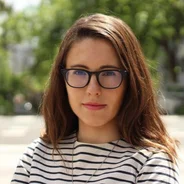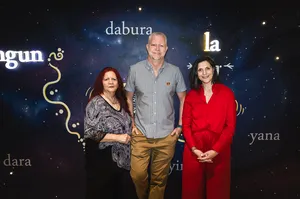Digital Future Initiative supports an indomitable duo of quantum researchers

Two years ago, Google announced the launch of the Digital Future Initiative, a $1 billion investment in Australian research, infrastructure and partnerships. The initiative has enabled the development of Google’s first research hub in Australia and supported several Quantum research collaborations with Australian universities.
On a more personal note, it has also strengthened a fruitful collaboration between Google Quantum AI researcher Ryan Babbush and Macquarie University professor Dominic Berry. Together, the dynamic duo has worked with their respective teams and collaborators to publish nearly 20 papers investigating relevant problems that a future quantum computer will be able to solve.
A full-scale quantum computer promises to harness the power of quantum mechanics to solve some problems exponentially faster than a conventional computer can. This has the potential to revolutionize many industries, from pharmaceuticals to clean energy. While full-scale quantum computers have not yet been built, Google Quantum AI is making rapid progress toward this goal.
Ryan and Dominic are working with their teams to ensure we are prepared to take full advantage of these powerful machines when they are realized. Many of the potential applications fall in the realm of quantum chemistry, where the laws of quantum mechanics rule how molecules behave and react with one another. Understanding the details of this behavior is critical for designing new drugs, new materials for batteries, or even understanding the inner workings of nuclear fusion experiments, as we described in a recent Google Research blog post.
They each have the ideal set of skills and experience to complement one another in such investigations. Ryan has the broad base of knowledge needed to identify problems where quantum computers might be useful and direct the activities of a diverse group of researchers. Ryan and his team at Google identify a new problem and start to develop an algorithm that they could run on the future quantum computer.
Here’s where Dominic comes in. It’s one thing to identify an area ripe for quantum computing applications. It’s another to actually envision how one would write, compile, and run an algorithm on a quantum computer in the most efficient way possible. As Dominic’s former PhD student, I know firsthand that he understands pretty much better than anyone all the technicalities involved in programming these algorithms. Dominic is a walking, talking encyclopedia of quantum algorithms.
Quantum scientists, including Marika and Dominic, collaborating in Sydney.

Together, Ryan, Dominic and their respective teams have developed techniques to simulate the most complicated systems that are infeasible to do with a classical computer, from materials with periodic order such as lithium nickel oxide battery cathodes to plasma heating during nuclear fusion experiments. They’ve even gone beyond chemistry applications to reimagine quantum twists on classical computer science problems, such as using sorting algorithms to improve the state preparation of quantum simulations or understanding high-dimensional datasets through topological data analysis. Their most recent paper shows how even a classical system of balls and springs can be simulated exponentially more efficiently with a quantum computer. The paper was published today in Physical Review X, but even before its publication, it earned one of the highest ratings on the public preprint forum SciRate.
With the support of Google, Dominic has been able to hire new postdoctoral researchers to grow his team. He also used some of the DFI funding to purchase a workstation that now runs 24/7 searching for more efficient simulation methods. In January this year, he was promoted to full professor at Macquarie University.
Ryan and his team at Google have also benefited immensely from the DFI funding. “Dominic Berry helped pioneer the theoretical computer science behind quantum algorithms for simulating physical quantum systems and classical differential equations,” Ryan says. “The long-term investment of the DFI has enabled this deep collaboration spanning many years rather than one-off funding for individual projects.”





